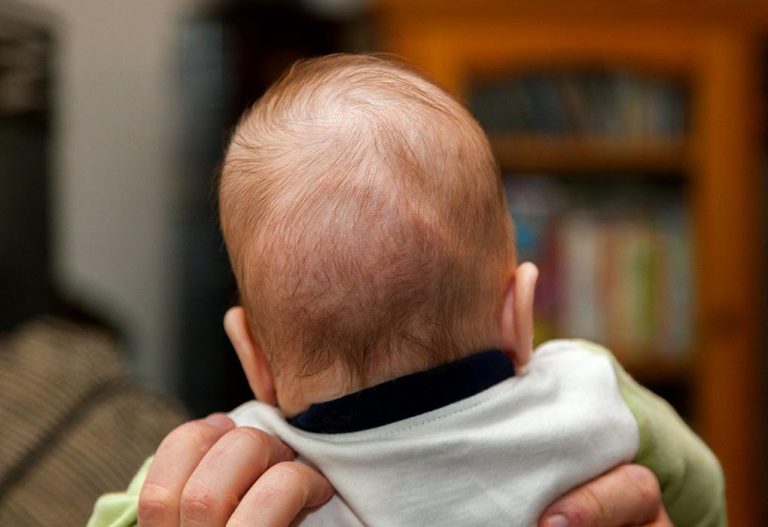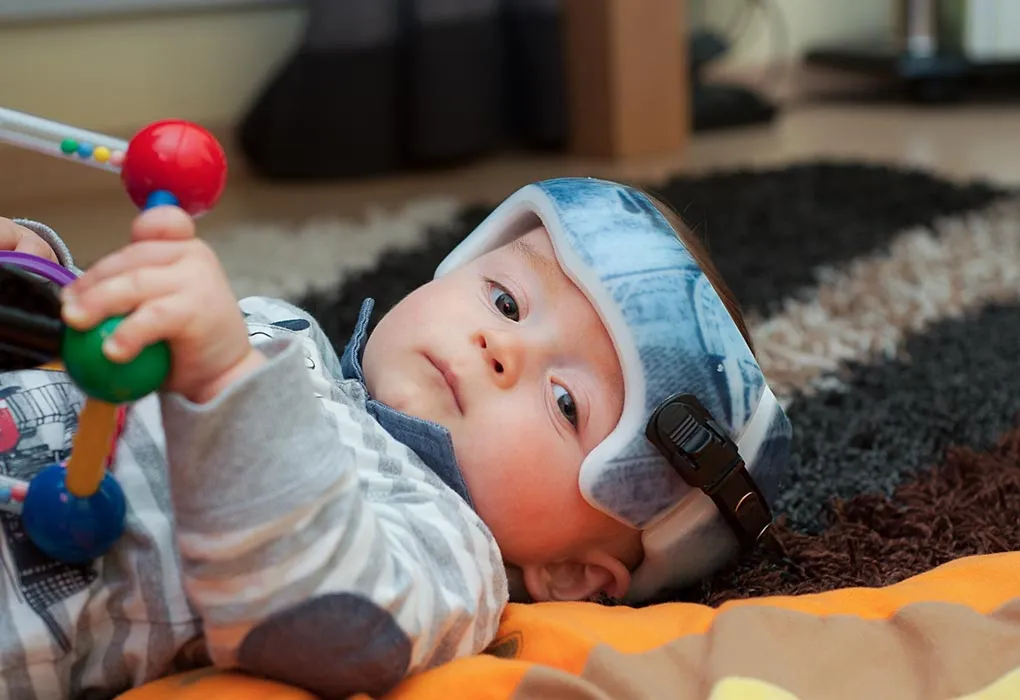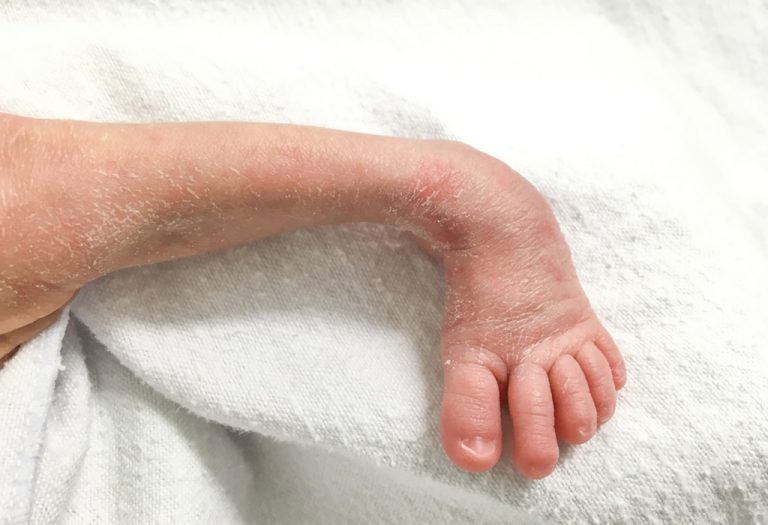Baby’s Head Shape: Causes, Concerns and Treatments

A newborn baby with an uneven head shape is not an uncommon sight and is often a normal part of early development. Though it is not a life-threatening condition, many parents are understandably concerned and eager to take corrective measures as soon as possible. An uneven head shape can be caused by various factors, including the baby’s position during birth, prolonged periods spent in one position, or the way they rest their head. Fortunately, with a little patience and some well-meaning advice from healthcare professionals, it is possible to help your baby achieve a more symmetrical head shape. Simple strategies and consistent care can make a significant difference. By following these tips, you can ensure that your baby’s head shape develops as beautifully as possible.
What Are the Causes of Changes in a Baby’s Head Shape?
Changes in a baby’s head shape are often temporary and can be caused by various factors. Here are the main reasons behind changes in a newborn’s head shape:
1. Birth
The method and duration of labor can influence a baby’s head shape at birth. Babies’ heads are designed to be moldable to help them pass through the birth canal. This flexibility allows the head to temporarily become elongated or cone-shaped due to the pressure exerted during birth. If a baby is born via cesarean section, their head is likely to be more rounded, as they don’t experience the squeezing pressure of the birth canal. However, factors like vacuum or forceps-assisted deliveries, long labor, or multiple births can also result in temporary changes in head shape. The soft spots or fontanelles, on a baby’s head will gradually close as the bones fuse, leading to a more typical head shape over time.
2. Positional Head Changes
Sleeping position is another common cause of changes in a baby’s head shape. Research indicates that back sleeping is the safest position for babies, but it can lead to a condition known as positional plagiocephaly, where a baby develops a flat spot on the back or side of the head. This typically occurs between one to two months of age and can result from spending too much time lying on their back in a crib, car seat, stroller, or rocker. Additionally, if a baby has tight neck muscles (muscular torticollis), they may consistently turn their head to one side, exacerbating the flattening.
3. Birth Defect
A rare condition called craniosynostosis can also affect a baby’s head shape. This birth defect occurs when the bones in a baby’s skull fuse prematurely, potentially before the brain has fully developed. Craniosynostosis affects about 1 in every 2,500 newborns and can lead to a variety of head shape abnormalities, including a long and narrow head (scaphocephaly), a flattened forehead on one side (which can alter the shape of the eyes and face), a wide and short head (brachycephaly), or a triangular-shaped head with a narrow front and wider back. This condition can cause serious complications, such as seizures, blindness, and brain damage, and often requires medical intervention to correct.
4. Prematurity
Premature babies often have softer skull bones and less-developed heads, which can make them more susceptible to changes in head shape. The softer bones and underdeveloped structure mean that the head is more likely to become misshapen during delivery. Fortunately, as these babies grow and their bones harden, the head shape usually improves.
5. Low Amniotic Fluid
Low levels of amniotic fluid in the womb can reduce the cushioning and support for the baby. This lack of cushioning may lead to an irregular head shape as the baby has less protection during movement and delivery. Adequate amniotic fluid is crucial for a more even head shape and overall comfort for the baby.
6. Multiple Pregnancies
In cases where a mother is carrying twins or triplets, there is less space in the womb for each baby to move around freely. This constrained environment can result in flat or oddly shaped heads as the babies may press against each other or the uterine walls. As the babies grow and spend more time outside the womb, their head shapes usually normalize.
How Long Does an Infant’s Head Shape Take to Fully Develop?
Your newborn baby’s head has two soft spots, one on the top and the other at the back. The fontanelle, which is at the back of the infant’s head, will close at around six weeks. The soft spot at the top of the head is much more obvious to touch and can be seen as a tiny dip of skin. This spot usually closes between 9 and 18 months of age.
Is an Odd Head Shape a Cause for Worry?
Although your baby’s odd-shaped head isn’t a cause for worry, it does seem like a cosmetic issue, especially when the child grows up. It is known as positional moulding and is noticeable when the baby is viewed from the sides or from the top. Fortunately, a flat head does not cause any kind of brain damage nor does it alter the baby’s physical and mental development in any way. As a parent, you should be aware but not unduly worried about it as this will take away the fun and excitement of becoming a parent. As the baby grows, he will have better neck and head control and will be able to distribute the pressure on his skull in an even manner.
Diagnosis
Your healthcare provider will routinely examine your baby’s head shape during well-child visits. They may assess the head from various angles to identify any abnormalities. If your provider suspects that a specific condition is affecting your baby’s head shape, they will conduct regular checks. They will gently palpate the baby’s head to detect flat spots, which could indicate positional plagiocephaly. This condition is often identified within the first few months of life and can vary in severity. Should the physical examination raise concerns about craniosynostosis, the provider may recommend imaging tests to confirm the diagnosis. A CT scan is the most reliable method to determine if the skull sutures have prematurely fused.
Additionally, an eye exam might be conducted to evaluate the baby’s optic nerve, which can help diagnose intracranial pressure often associated with craniosynostosis.
Remedies to Treat a Baby’s Uneven Head Shape
Anxious parents can take heart from the fact that their baby’s uneven head shape isn’t going to be a permanent one and it can be altered into a rounded one through simple remedies. Through counter-positioning or repositioning, while your little one is sleeping, playing or feeding, the flat areas of your baby’s head can be reshaped. The following easy-to-follow remedies can be useful in treating your infant’s uneven head shape:
- If your baby sleeps in a crib or a basket, make sure your baby isn’t turned towards one direction for long by turning it around regularly. By alternating the direction of placement, it will ensure that he does not remain in the same position for too long.
- Hold a rattle or a toy in the other direction if you notice your child is focussed on one side for long periods. If he loves looking at the lamp or the fan, move the crib or basket in the opposite direction, so the head turns in that direction and his head is no more on the flat side.
- When the baby sleeps during the day under your watchful eye, encourage him to lie on his side as much as possible. You will then be able to supervise his position and he will rest at a different angle too. This is important since lying on his side could obstruct his breathing which could be dangerous.
- As the baby’s neck muscles get stronger, allow him to spend some time, a minute or two, on his tummy. As he grows, increase this time and you can play and talk to him while he is placed on the stomach. Make sure he does this under your supervision. Increase this time to at least 30 minutes a couple of times every day.
- While breastfeeding or bottle-feeding the baby, you will have a favourite side that you prefer to keep him at. Make sure you change his head direction frequently so the flat portion does not remain depressed for long periods.
Many mothers use a newborn baby head shape pillow, which is horseshoe-shaped, to try and alter the flat shape of their baby’s head. However, the use of a pillow for infants below the age of 12 months is not recommended as it could lead to the risk of suffocation. In fact, pillows, soft toys and loose beddings should be kept away from the baby’s bed as they could obstruct the little one’s breathing process.
When Does Your Baby Need a Helmet?
If the unevenness of your baby’s head does not improve despite all the above-mentioned rectification methods, speak to your paediatrician for an alternative solution. He may recommend the use of a helmet to correct the head shape of the baby, especially if your baby is above the age of 6–8 months of age.
The helmet is useful in providing the right volume of room for the baby’s head to grow in areas where it is flat and restricts growth in other areas. The helmet has to be worn through the entire day and should be taken off only during bathing time. Though effective, this treatment has to be followed diligently as helmet adjustments have to be done frequently as the baby grows. The doctor will recommend the use of the helmet for about 90 days, depending on the response shown. In some cases, the helmet costs and doctor fees can be quite prohibitive.
How to Prevent a Misshapen Head?
In order to prevent the flattening of your tiny one’s head, the key is to hold and lay him down in various positions through the day. Unless your doctor has recommended otherwise, always put your baby to sleep on his back. However, you should alternate the position of the head from the feet of the crib to the head of the crib. Your baby will naturally face towards the room door or the window so this will help him turn his head in equal proportions in both directions. This will ensure that the baby’s head does not remain in one direction and the chances of a misshapen head are reduced.
When to Consult the Doctor?
Monitoring your baby’s head shape is important, and knowing when to consult a doctor can help ensure any issues are addressed promptly. Here are some key indicators regarding babies’ head shapes, when to worry, and when it may be time to seek medical advice:
- Misshapen Head Beyond Two Weeks: If your baby’s head remains misshapen more than two weeks after birth, it’s advisable to consult a doctor. Persistent shape abnormalities may require further evaluation.
- Bulging or Swelling Spots: Any areas on your baby’s head that appear swollen or are bulging out should be examined by a healthcare provider. These could indicate underlying issues that need immediate attention.
- Abnormal or Sunken Soft Spots: If the soft spots (fontanelles) on your baby’s head appear sunken or if there are no soft spots at all, seek medical advice. These changes can be signs of dehydration or other health concerns.
- Changes in Eye Appearance: Consult your doctor if you notice changes in the shape or position of your baby’s eyes. This could indicate underlying cranial issues.
- Alterations in Forehead Shape: Any noticeable changes in the position or shape of your baby’s forehead should be evaluated by a healthcare professional. These alterations can be linked to cranial abnormalities.
- Slow or No Head Growth: If your baby’s head is not growing at a normal rate or is growing very slowly, it’s important to have this assessed by a healthcare provider. Proper head growth is crucial for brain development.
- Unusual Symptoms: Be alert for other symptoms such as unusual sleepiness or vomiting. These signs, in combination with head shape concerns, warrant a prompt consultation with your doctor.
FAQs
1. When does an infant’s head shape become permanent?
A baby’s head shape is usually more permanent by around one year of age. During the first year, the bones in the skull gradually harden and fuse, making the head less moldable. However, some minor adjustments can still occur until about age two, as the skull continues to grow and develop.
2. Are certain sleeping positions better for preventing flat head syndrome?
Back sleeping is recommended as the safest position to reduce the risk of sudden infant death syndrome (SIDS). To help prevent flat head syndrome while ensuring safety, alternate the direction your baby’s head faces each time you lay them down to sleep. Incorporate supervised tummy time during the day and encourage your baby to look in different directions.
3. Are there any exercises to improve my baby’s head shape?
Yes, there are exercises that can help improve your baby’s head shape, especially if they have positional plagiocephaly. These include tummy time, which strengthens neck and shoulder muscles while reducing pressure on the back of the head. Encouraging your baby to turn their head to both sides by placing toys on different sides can prevent a preference for one side. Gentle neck stretches, alternating head positions when lying down, and holding your baby in an upright position or using a supportive baby carrier can also promote a more rounded head shape.
4. Can using a special pillow help with my baby’s head shape?
Specially designed pillows, often referred to as “baby flat head pillows” or “orthopedic pillows,” are marketed to help improve head shape by reducing pressure on flat spots. However, their effectiveness is debated among professionals. While some parents find them helpful, many healthcare providers recommend focusing on repositioning techniques and tummy time as more effective strategies. It’s important to consult your pediatrician before using any pillow to ensure it is safe and appropriate for your baby’s specific needs.
Though an odd-shaped head on your baby can be slightly disturbing, parents shouldn’t worry much on this front. Your baby’s head will soon turn into a more rounded shape and any slight unevenness will be hidden too with the growth of hair on the cute head.
References/Resources:
1. Baby’s head shape: Cause for concern?; Mayo Clinic; https://www.mayoclinic.org/healthy-lifestyle/infant-and-toddler-health/in-depth/healthy-baby/art-20045964
2. Is Your Baby’s Head Misshapen?; St. Louis Children’s Hospital; https://www.stlouischildrens.org/health-resources/pulse/your-babys-head-misshapen
3. Anderson. B, Kortz. M, Black. A, Kharazi. K; Anatomy, Head and Neck, Skull; National Library of Medicine; https://www.ncbi.nlm.nih.gov/books/NBK499834/
4. Craniosynostosis; CDC Birth Defects; https://www.cdc.gov/birth-defects/about/craniosynostosis.html
5. Safe Sleep; American Academy of Pediatrics; https://www.aap.org/en/patient-care/safe-sleep/
6. Jung. B, Yun. I; Diagnosis and treatment of positional plagiocephaly; Archives of Craniofacial Surgery; https://e-acfs.org/journal/view.php?doi=10.7181/acfs.2020.00059; April 2020
7. Your Baby’s Head; American Academy of Pediatrics; https://www.healthychildren.org/English/ages-stages/baby/Pages/Your-Babys-Head.aspx
Also Read:
Head Banging in Babies and Toddlers
Why Is My Baby Shaking Her Head Side to Side?
Infant Head Circumference Chart (0 to 36 Months)
Was This Article Helpful?
Parenting is a huge responsibility, for you as a caregiver, but also for us as a parenting content platform. We understand that and take our responsibility of creating credible content seriously. FirstCry Parenting articles are written and published only after extensive research using factually sound references to deliver quality content that is accurate, validated by experts, and completely reliable. To understand how we go about creating content that is credible, read our editorial policy here.

























